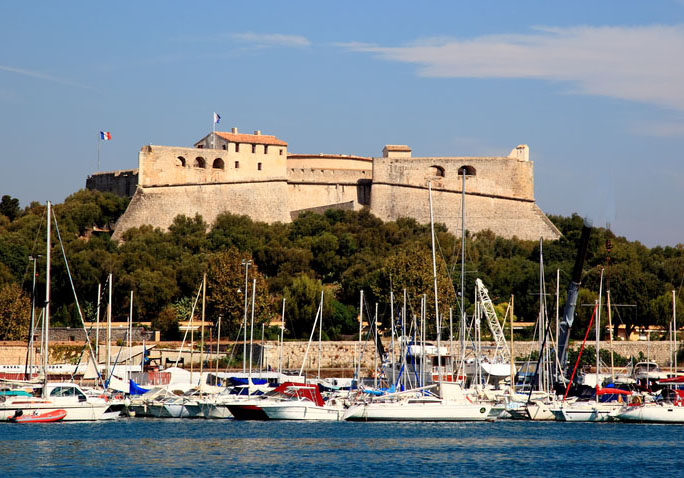Situé sur la presqu’île Saint-Roch, le Fort est bâti sur un rocher culminant à 26 mètres au dessus du niveau de la mer. Son chemin de ronde s’élève à 43 mètres et offre une vue panoramique à 360 degrés. Le Fort est entouré d’un parc protégé de 4 hectares à la faune et la flore typiquement méditerranéenne. Ce parc est la propriété du Conservatoire du Littoral et se trouve intégré au projet Natura 2000.

Ce bâtiment défensif était autrefois une tour circulaire construite en 1550 sur le site de la chapelle Saint-Laurent. L'ouvrage a ensuité été perfectionné et adapté à l'évolution des techniques militaires de siège et celle des armes à feu.
Lorsque Nice est rattachée à la France en 1860 et que la frontière recule, le bâtiment est déclassé militairement et les soldats le quittent au profit de casernes plus modernes construites au pied du Fort Carré.
C’est dans ces casernes que l’Armée installe après la Seconde Guerre Mondiale un centre de formation sportif militaire de haut niveau, mené par du personnel de l’Ecole de Joinville.
Le Fort Carré est cédé par l’Armée au ministère des Sports en 1967, en même temps que toutes les installations sportives et les casernes militaires.
Restauré par les bénévoles du Club du Vieux Manoir entre 1979 et 1985, le Fort Carré est finalement racheté par la Ville d’Antibes en 1997 et ouvert au public en 1998.
Le Fort est aujourd'hui classé Monument Historique et abrite un musée.
Situated on the Saint Roch peninsula, the Fort is constructed on a rock with a summit at 26 metres above sea level. The surrounding walkway is at 43 metres with a 360 degree panoramic view. There is a 4 hectare protected park around the Fort containing typical Mediterranean flora and fauna. The park is the property of the Coast Conservation Trust and is integrated in the Natura 2000 project.
This defensive building was once a circular tower dating back to 1550 on the site of the Saint-Laurent Chapel. Its construction was perfected under Vauban's command and adapted to the evolution of fire-arms and military siege techniques.
When Nice was once more attached to France in 1860 and the border receded, the building was declared non-military and the soldiers left for more modern barracks constructed at the foot of Fort Carré.
It was in these barracks that the army installed a high-level military sports training centre, headed by staff from the Joinville school.
Fort Carré was ceded by the army to the Sports Ministry in 1967 as well as the sports facilities and military barracks.
Restored by volunteers from the Old Manor Club between 1979 and 1985, Fort Carré was finally re-purchased by Antibes council in 1997 and opened to the public in 1998.
Today, the Fort is classified as an historic monument.
Pour trouver la cache / To find the cache :
A) Qui a construit le Fort Carré / Who built the Fort Carré ?
- Henri II (A=2)
- Vauban (A=3)
- François de Mandon de Saint-Rémy (A=5)
B) Sous quel autre nom est connu le Fort Carré / Under which name is known the Fort Carré ?
- Fort Vauban (B=5)
- Fort Championnet (B=4)
- Fort Libéria (B=2)
Vous pourrez trouver ces réponses en cherchant sur Internet ou sur place, au Fort Carré. N'hésitez pas également à faire la visite du Fort (3€ par adulte).
You will be abble to find the answers on the Internet or coming to the Fort Carré. You can also visit the Fort (3€ per adult).
Une fois les questions ci-dessus répondues, rendez-vous aux coordonnées suivantes :
Once you have answer the questions, go to the following coordinates :
N 43° 35.B[A-2]7 E 007° 07.A[B+5]7
Pensez à prendre un crayon pour vous logger !
Think to take a pen to log your visit!
Horaires d’ouverture au public :
Du 16 septembre au 14 juin : de 10h à 16h
Du 15 juin au 15 septembre : de 10h à 17h30
Ouvert toute l’année, tous les jours sauf le lundi et les jours fériés suivant : 1er janvier, 1er mai, 1er novembre et 25 décembre.